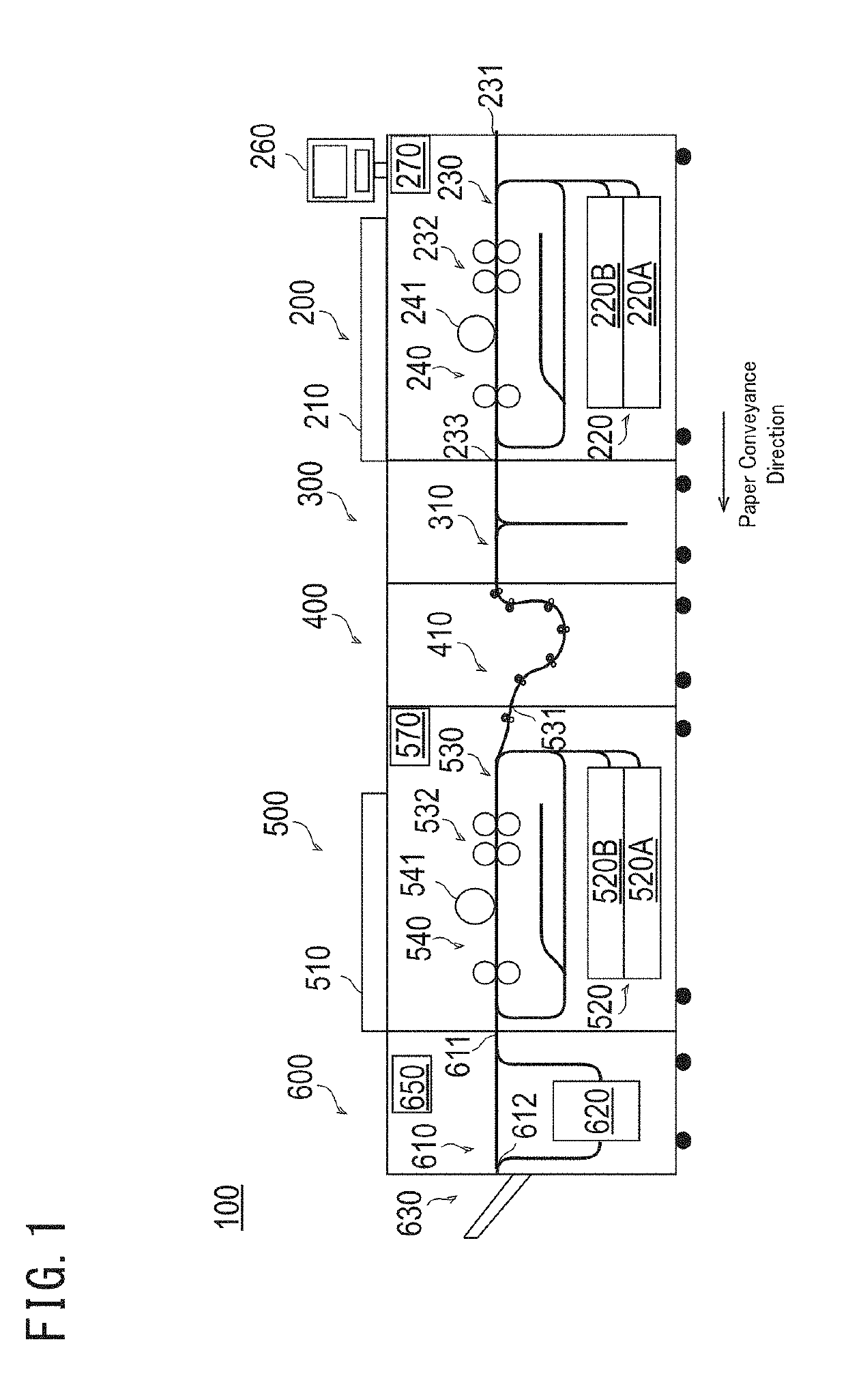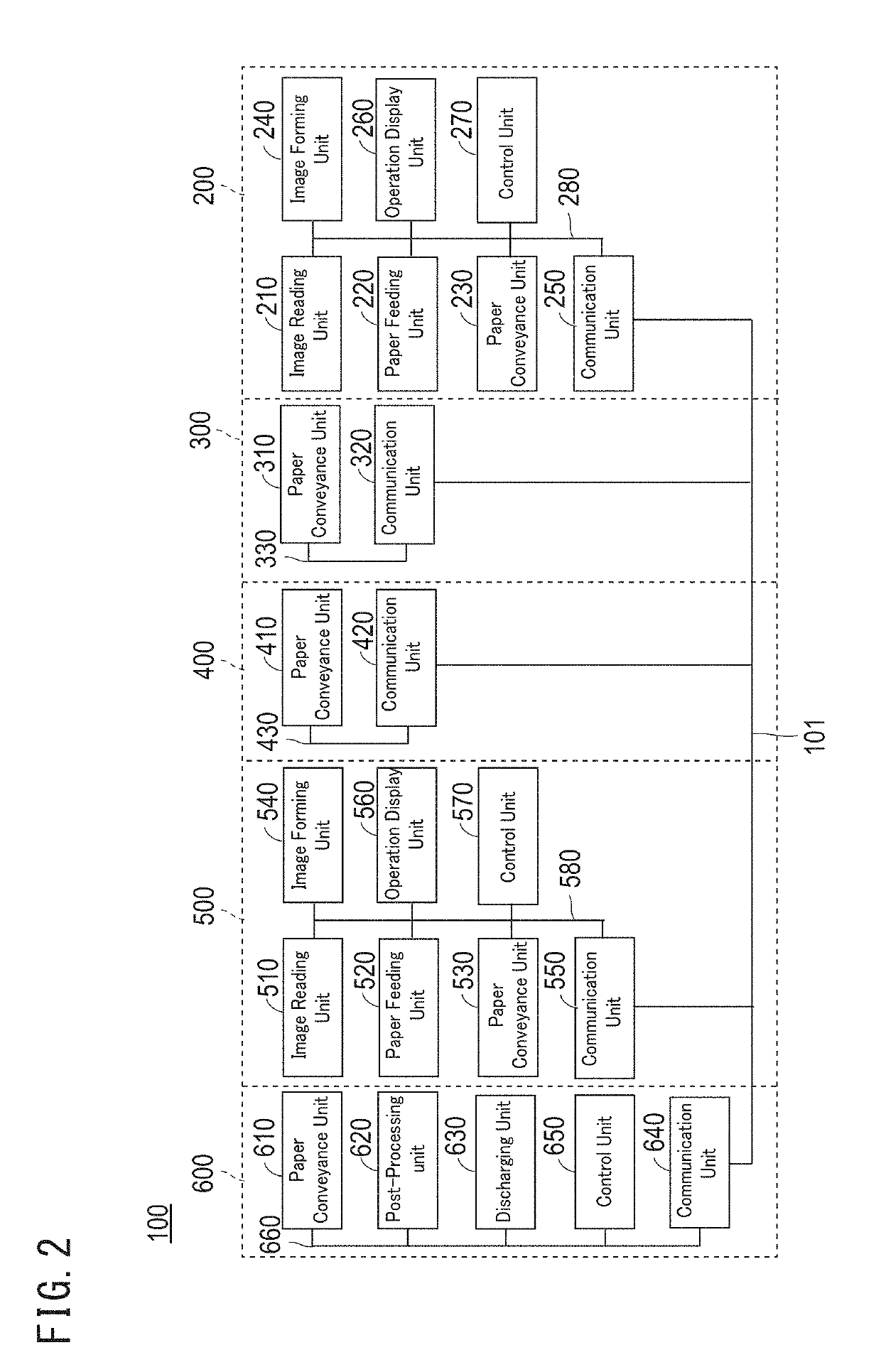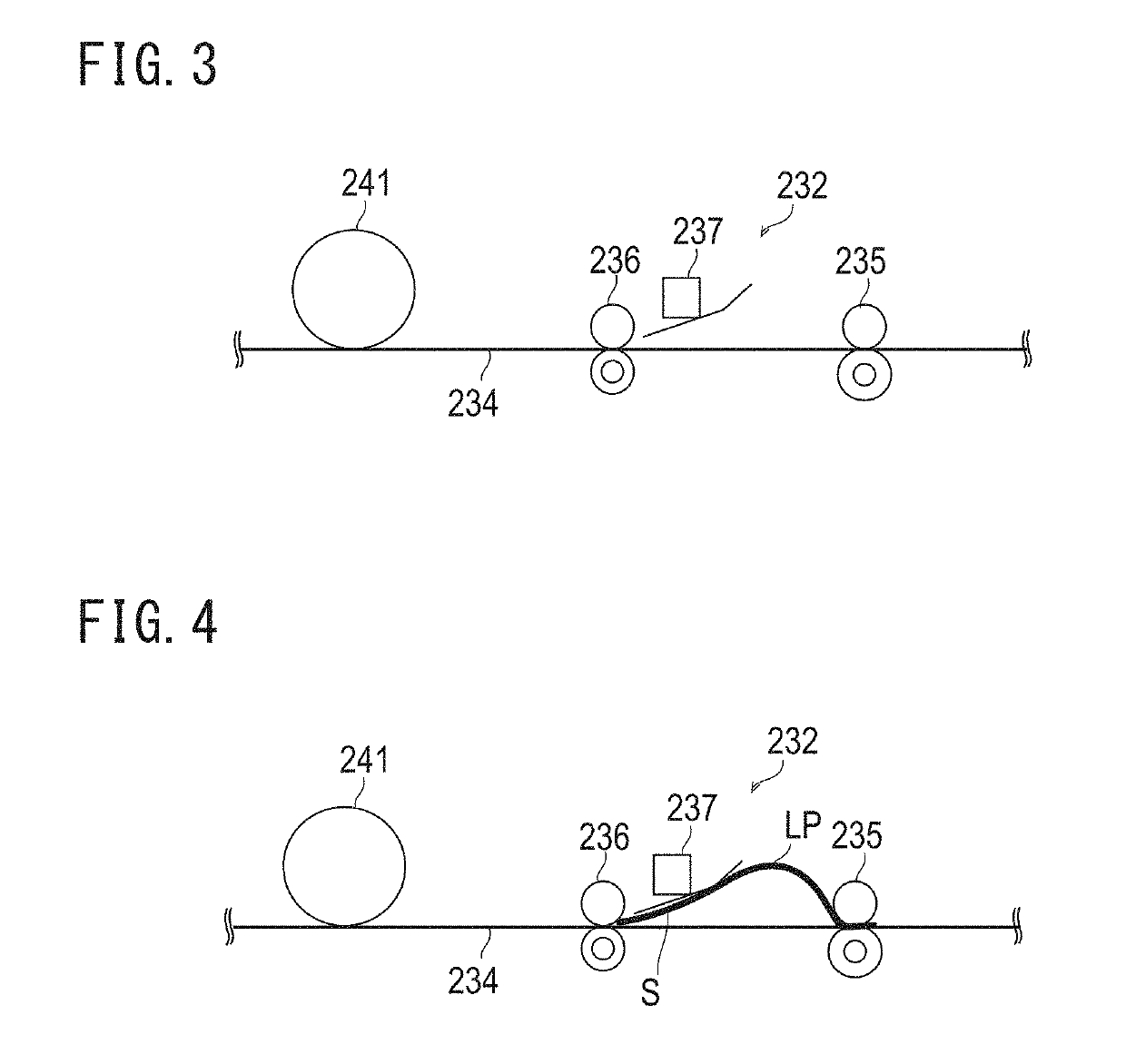Image forming system
a technology of forming system and paper, which is applied in the direction of electrographic process apparatus, thin material processing, instruments, etc., can solve the problems of significant cost, inability to obtain information on paper conveyance at the upstream apparatus, and delay in paper which is conveyed from the upstream apparatus to the downstream apparatus, so as to prevent or suppress the deviation of the synchronization of the printing cycle and maintain the productivity of the printing process.
- Summary
- Abstract
- Description
- Claims
- Application Information
AI Technical Summary
Benefits of technology
Problems solved by technology
Method used
Image
Examples
first embodiment
[0036](First Embodiment)
[0037]FIG. 1 is a schematic cross-sectional view exemplifying a configuration of the image forming system according to the first embodiment and FIG. 2 is a schematic block diagram exemplifying a configuration of the image forming system illustrated in FIG. 1. Further, FIG. 3 is a schematic diagram exemplifying a configuration of the resist unit of the upstream apparatus illustrated in FIG. 1 and FIG. 4 is a schematic diagram exemplifying the creation of the resist loop at the resist unit illustrated in FIG. 3.
[0038]100>
[0039]As illustrated in FIG. 1, an image forming system 100 includes an upstream apparatus 200, a first intermediate conveying device 300, a second intermediate conveying device 400, a downstream apparatus 500, and a post-processing device 600, all of which are connected in series along the paper conveyance direction. The upstream apparatus 200 and the downstream apparatus 500 operate as the image forming apparatus of the series tandem system.
[...
second embodiment
[0149](Second Embodiment)
[0150]In the first embodiment, descriptions are given for a case in which resuming of the conveyance of the following paper whose conveyance is stopped at the resist unit is advanced and thus, the delay time of the following paper is solved or reduced. In the second embodiment, descriptions are given for a case in which, in the second intermediate conveying device, the conveyance speed of the following paper is increased to solve or reduce the delay time of the following paper. To avoid the duplication of descriptions, for configurations which are the same as those of the first embodiment, detailed descriptions are omitted.
[0151]The downstream apparatus of the present embodiment can include configurations of the downstream apparatus of the first embodiment. For example, the downstream apparatus of the present embodiment may include or not include a configuration for advancing resuming of the conveyance of the following paper Sn whose conveyance is stopped at...
PUM
 Login to View More
Login to View More Abstract
Description
Claims
Application Information
 Login to View More
Login to View More - R&D
- Intellectual Property
- Life Sciences
- Materials
- Tech Scout
- Unparalleled Data Quality
- Higher Quality Content
- 60% Fewer Hallucinations
Browse by: Latest US Patents, China's latest patents, Technical Efficacy Thesaurus, Application Domain, Technology Topic, Popular Technical Reports.
© 2025 PatSnap. All rights reserved.Legal|Privacy policy|Modern Slavery Act Transparency Statement|Sitemap|About US| Contact US: help@patsnap.com



